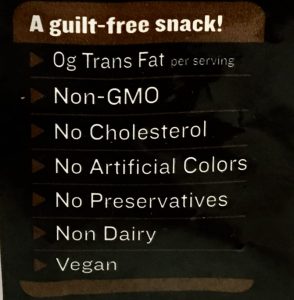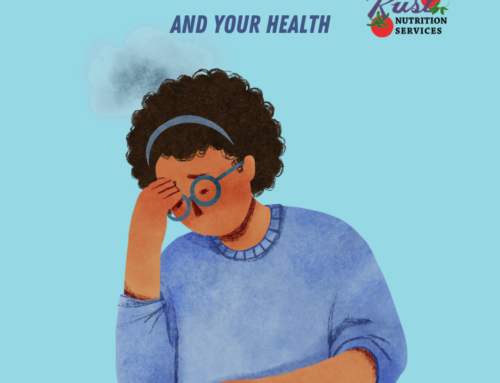This post includes a link to a blog that was sponsored by the U.S. Farmers and Ranchers Alliance, but are expressions of my own.
Throughout the course of my 30-year nutrition career, one thing has remained constant: nutrition misinformation. I’ve turned my current communications career into a fact-finding mission by working with the food industry to help consumers understand what’s in their food, the safety of those ingredients, and how to appropriately balance diet and lifestyle. My goal is to help consumers relax and enjoy eating for good health!
What is the Non-GMO Label Doing for You?
Recently there’s been quite a bit of buzz about the non-GMO label. Some feel that labeling should be mandatory because consumers “have a right to know what’s in their food”. Rightly so, (ingredient labels should suffice) but my concern is that the simplicity of a non-GMO front-of-package label may mislead the consumer to assume that:
- There is a non-GMO equivalent of that product [there are ten GMO crops available on the US market: soybeans, corn, canola, cotton, alfalfa, sugar beets, summer squash, papaya, apples and potatoes]
- A non-GMO product is better than a GMO equivalent
Just as the certified organic label doesn’t mean “better”, nor does the non-GMO labeling. Some consumers equate “Non-GMO” with environmentally friendly. In reality, this technology can actually save resources. Genetic Engineering (GE) technology helps farmers to maintain soil, reduce pesticide use, increase production, and conserve resources. Sounds pretty environmentally sustainable, right?

These “No” messages don’t equal “healthy”.
What can you actually do to improve your diet?
Eating well is a little bit more complicated than simply avoiding an ingredient. Since GMOs have been shown to be safe, there’s no reason to avoid them. Instead, there are many other things you can work on to improve your diet:
- Eat more Vegetables: Choose fresh, frozen or canned. If you are looking to reduce sodium, fresh or frozen is best, but some canned vegetables have low sodium options.
- Choose Fruit: Choose fresh, canned or dried. Fruits and vegetables provide antioxidants and vitamins and minerals.
- Add legumes and beans: These nutrition powerhouses provide vitamins, minerals and fiber, as well as protein.
- Choose lean beef, pork and poultry: Provide the protein you need daily, as well as essential minerals including iron and zinc. Enjoy these foods along with a side of veggies.
- Add dairy foods: Milk provides calcium, protein, potassium, vitamin D, and phosphorous. Research shows that including dairy in a balanced diet can help with weight control and blood pressure.
- Use a moderate amount of fat: Include heart-healthy fats such as canola oil, olive oil, sunflower oil, soybean or other liquid vegetable oils. Also, adding nuts, seeds, or avocado to snacks and salads is another way to add healthy fat to your diet. While coconut oil was recently in the news, it should only be consumed in small amounts. Your total fat intake should be moderate, and you should focus on choosing liquid oils in cooking, but using small amounts.
- Fiber-rich grains: Such as barley, oats, bran cereals are essential for digestive health.
Healthy eating is a life long challenge. Set goals to eat a balanced diet with lots of variety. Add more vegetable dishes into your diet, choose lean meats most often, include low fat dairy regularly, try new whole grain dishes, and enjoy treats in moderation.





[…] written about food labels and health before, and I continue to believe that many front of package claims can be confusing, or are used […]
[…] written about food labels and health before, and I continue to believe that many front of package claims can be confusing, or are used […]